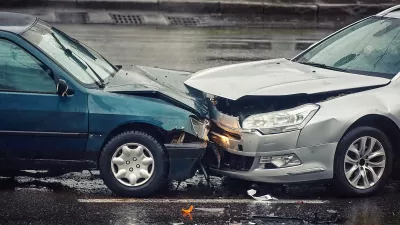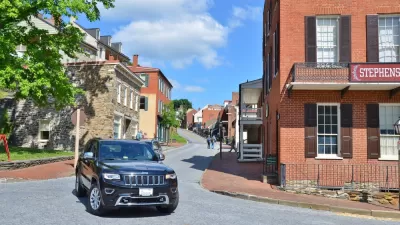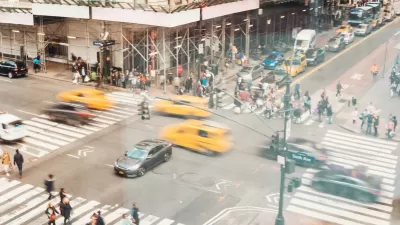The lack of a nationwide standard and extensive officer discretion lead to inconsistent data when it comes to traffic crashes and fatalities.

On the heels of "an explosive Washington, D.C., study that showed police had failed to record as much as 30 percent of 911 calls about drivers striking pedestrians, bicyclists, and other road users, with crashes going unreported most often in Black and brown neighborhoods," reports Kea Wilson. Advocates in Washington, D.C., for example, "say that as much as 40 percent of crashes in mostly Black areas may go uncounted — so District leaders may not even know where its most dangerous corridors are, much less have the specific data they need to fix them."
This underreporting of crashes, writes Wilson, "isn’t the only reason why U.S. communities don’t have a full picture of our national traffic-violence epidemic." Other important factors include: the lack of a federal crash-reporting standard; the flawed standard currently recommended by the National Highway Traffic Safety Administration (NHTSA), which omits important details such as "how far a walker who’s struck by a driver might be from the nearest unobstructed crosswalk" and vehicle height and weight; and the amount of discretion officers have in choosing what information to collect and report.
Rohit T. Aggarwala, senior fellow at Cornell Tech and author of an op-ed encouraging Secretary Buttigieg to reform the Fatality Analysis and Reporting System (FARS), "hopes that, with the right reforms, much subjectivity can be stripped from crash reporting" so cities can have more accurate data when making Vision Zero plans.
FULL STORY: Why U.S. Car Crash Reporting Is Broken

Alabama: Trump Terminates Settlements for Black Communities Harmed By Raw Sewage
Trump deemed the landmark civil rights agreement “illegal DEI and environmental justice policy.”

Planetizen Federal Action Tracker
A weekly monitor of how Trump’s orders and actions are impacting planners and planning in America.

Why Should We Subsidize Public Transportation?
Many public transit agencies face financial stress due to rising costs, declining fare revenue, and declining subsidies. Transit advocates must provide a strong business case for increasing public transit funding.

Understanding Road Diets
An explainer from Momentum highlights the advantages of reducing vehicle lanes in favor of more bike, transit, and pedestrian infrastructure.

New California Law Regulates Warehouse Pollution
A new law tightens building and emissions regulations for large distribution warehouses to mitigate air pollution and traffic in surrounding communities.

Phoenix Announces Opening Date for Light Rail Extension
The South Central extension will connect South Phoenix to downtown and other major hubs starting on June 7.
Urban Design for Planners 1: Software Tools
This six-course series explores essential urban design concepts using open source software and equips planners with the tools they need to participate fully in the urban design process.
Planning for Universal Design
Learn the tools for implementing Universal Design in planning regulations.
Caltrans
Smith Gee Studio
Institute for Housing and Urban Development Studies (IHS)
City of Grandview
Harvard GSD Executive Education
Toledo-Lucas County Plan Commissions
Salt Lake City
NYU Wagner Graduate School of Public Service





























